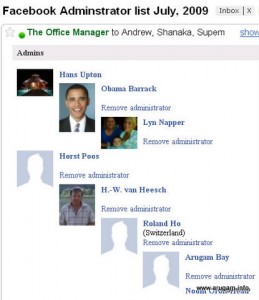Self-help is best
To our knowledge, Arugam.info was the first and perhaps only media which embraced new tools, such as this site, within hours of the 2004 Tsunami. Back then, we realized the wealth of options the internet can provide. Complimented by Twitter and Facebook, as well a s YouTube we tried to show that self help can be cheap.
No doubt it is best and also possible, as we managed to show.
In our case communication from an area which had no power and no telephones it was more of a challenge than many of you, in developed places can imagine.
Various Generators, direct Inmarsat connections and many other innovations were needed and found.
This web site coordinated immediate self-help within days or even hours of the 2004 waves. And weA? continued our work to promote “Arugam Bay” ever since.
It is hoped that the local Community, for which this site was conceived, will soon understand the power of the net. And hopefully participate more in our approach.
In this context the article below has caught our attention.
We will continue to seek more avenues to drum up a bit of support and attention.
The “Best of British” award is one example – and this kind of promo is not only cheap, but free. We are in a continuous learning process. Thanks for being one of our readers!
Aid agencies ‘must use new tools’
|
By Jason Palmer
Science and technology reporter, BBC News |
![]()

Ushahidi is a free and open-source information-sharing platform
|
The “crowd-sourced” data that comes from victims of natural disasters and conflicts is now a crucial part in disaster management, says a new report.
The UN Foundation/Vodafone Foundation Partnership report outlines examples of new technologies that mitigate conflicts and save lives worldwide.
A report author said it reveals that aid agencies “fail to take advantage” of new tools available.
It says a number of challenges remain to maximise the tools’ potential.
The partnership is a $30m, 5-year plan that joins the humanitarian arms of each group, with a focus on the technological aspects of aid.
The new report outlines a number of technological tools that have already proven their worth, or could be put to better use.
A rising star in the effort is Ushahidi, an open-source combination of text messaging and Google maps that got its start following the violence in the wake of the 2007 Kenyan elections.
Since then, it has been used to map conflicts and indirectly monitor elections from Colombia to the Democratic Republic of Congo to Afghanistan.
And more effective than the traditional megaphone is FrontlineSMS, a tool used to broadcast emergency information via SMS to anyone in a region with mobile signal.
“In the wake of the 2004 Indian Ocean tsunami, there’s been a lot of appreciation of the need for improved early warning systems using technology,” said UN Foundation/Vodafone Foundation partnership spokesperson Adele Waugaman.
“So [Sri Lankan authorities] sent out a text message and included village chiefs, media outlets – a number of different touch points, recognising that there are plenty of people who don’t have mobile phones but that if they knew how to get to the right people, they could still get the word out.”

Thousands of duplicate voting cards were discovered in an investigation
|
What has emerged from the partnership’s report is the value inherent in information coming directly from those people involved in a crisis.
“It highlights the new ‘people-centricness’ of information in disasters,” Ms Waugaman told BBC News.
“It means that thanks to innovations, tools like Ushahidi, FrontlineSMS, Twitter, and Facebook, you’re seeing people becoming more and more a primary and trusted source of information in disasters.”
However, the new tools can also be used to spread false information when they are used in politically charged situations.
“The challenge with this, as we found with Twitter in Tehran [surrounding the Iranian elections in June], is confusion about the authenticity of information being shared, about what was rumour and what was true,” Ms Waugaman continued.
To that end, the founders of Ushahidi are helping to develop a service called SwiftRiver that aggregates information surrounding a crisis – from aid agencies themselves down to the tweets of those affected.
Further, it provides a measure of both how likely any piece of information is to be true, and if so, how important it is.
Structural change
While the swift development of these technologies continues apace, economist and report author Diane Coyle believes aid agencies have their own part to play in making the most of them.

The new tools must also develop a means to check the information
|
“The top-down and centralised nature of aid agencies fails to take advantage of the potential offered by the technologies. It’s really quite a different approach from what they’ve done traditionally, which is that when there’s an emergency, they go and sort things out,” she told BBC News.
Instead, she said, aid agencies and government disaster relief agencies could work best by simply providing a framework for the use of the technologies, coordinating their use by people in affected areas and allowing the free flow of information among those people.
This stands in sharp contrast to the traditional “up-the-chain, down-the chain” flow of information.
“I think the frame of mind of aid agencies is that it’s their job to help…but it may be that actually the best help you can give is letting other people do it,” she continued.
“For the first time the people in affected populations could do more to help themselves, but they can’t do that if the structures of the people trying to help them don’t change.”
source:

 Arugam Forum
Arugam Forum Arugam Photo Galleries on Picasa
Arugam Photo Galleries on Picasa Old Website
Old Website Press Coverage
Press Coverage Surf Forecast for Arugam Bay
Surf Forecast for Arugam Bay
0 Responses to “New Tools ….@ Arugam”